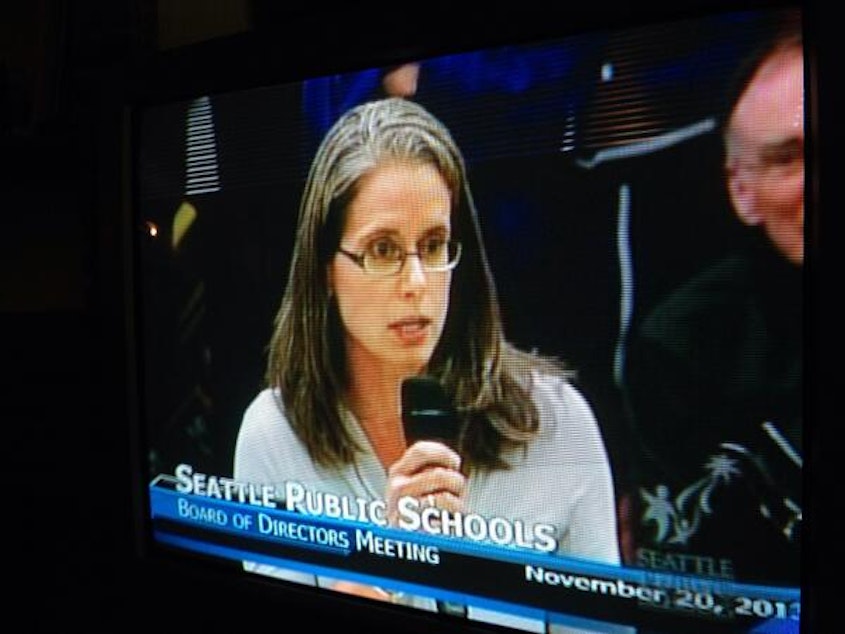Seattle School Board Approves New Boundaries At Seven Hour Meeting

At a seven-hour meeting on Wednesday night, the Seattle School Board approved controversial new boundaries – to the chagrin of parents, teachers and students who packed the room to beg the board to reconsider.
Zachary Kogut, a seventh-grade APP student at Hamilton Middle School, took a slightly sarcastic tone when he addressed the board: “All along you’ve been saying, ‘Don’t worry, we’ll grandfather all students. Sike! Just kidding, not you’ is the current message. In fact, we had little time to rally an opposition movement because you sprung it on us quite recently.”
The school board approved the measure but included seven amendments and froze several of the proposed boundary changes. One amendment requires the board to review and possibly modify boundaries every year.
The board said it could not please everyone because boundary changes are necessary for new enrollment growth. Currently, there are 51,000 students in the district; the district demographer predicts there will be 60,000 within six years, in 2020.
Teresa Wippel, the director of communications for the district, said the changes are necessary given the new schools the district will soon open to accommodate more students.
"The biggest driver for changing growth boundaries is our enrollment,” Wippel said. “We certainly have always said it’s a good problem to have, because it’s better than having to close schools.”
But parents note that the district closed schools in recent years, and they’re frustrated by what they see as the district's history of shoddy projections.
Among the reasons for boundary changes, according to Wippel: Equitable access to programs for kids throughout the district, keeping the district’s costs down and minimizing disruption to families.
Wippel said the district did extensive community outreach, and has gone through several versions of the boundary proposal.
At the board meeting on Wednesday night, Terri Green, president of the Wedgwood Elementary Parent Teacher Association, said parents at her school are not asking for special treatment.
“Just like everyone else in the district, we want everyone else to go to their walkable neighborhood school,” Green said. “And once our students start at a school, we believe they should finish at that school.
KUOW spoke with four parents who complained about the new boundaries, citing walkability. But those parents also admitted that their children don’t usually walk to school because it’s faster to drive them.
But Tom Jackson, whose son Arlo walks every morning to Mercer Middle School, said the boundary changes represent a real problem for his daughter Frida, who will be assigned next year to Washington Middle School. Washington is too far to walk or bike safely, he said, but too close for a school bus to pick her up.
Jackson said the boundary changes don’t make sense to him, given the district’s talk about neighborhood schools and walkability: "Maybe if I knew the bigger picture of how the boundary changes were [determined], maybe it is the right thing, but I haven’t had one good explanation yet why it is. I’m willing to listen."
Produced for the Web by Isolde Raftery.

